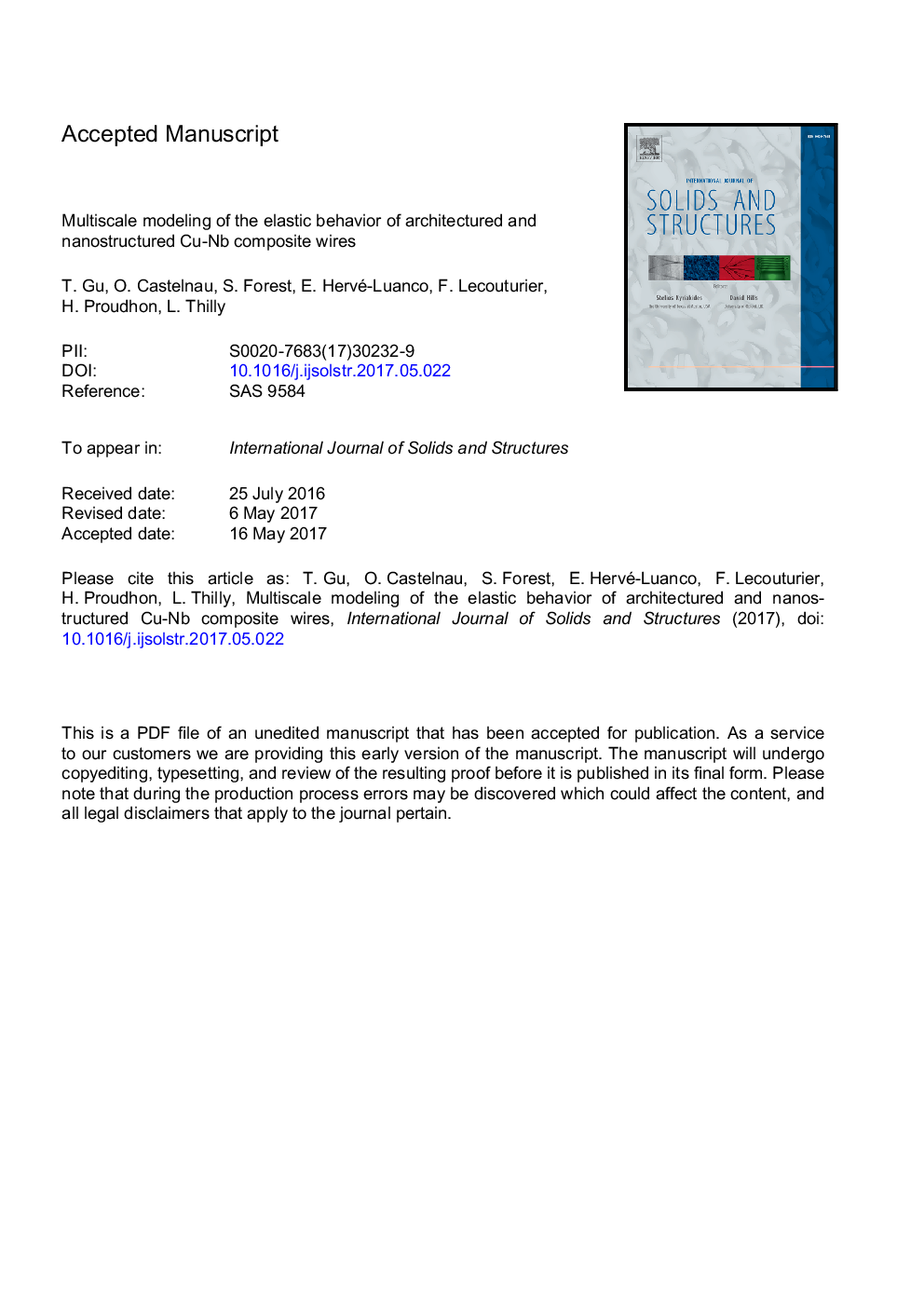| Article ID | Journal | Published Year | Pages | File Type |
|---|---|---|---|---|
| 4922313 | International Journal of Solids and Structures | 2017 | 54 Pages |
Abstract
Nanostructured and architectured copper niobium composite wires are excellent candidates for the generation of intense pulsed magnetic fields (> 90T) as they combine both high strength and high electrical conductivity. Multi-scaled Cu-Nb wires are fabricated by accumulative drawing and bundling (a severe plastic deformation technique), leading to a multiscale, architectured, and nanostructured microstructure exhibiting a strong fiber crystallographic texture and elongated grain shapes along the wire axis. This paper presents a comprehensive study of the effective elastic behavior of this composite material by three multi-scale models accounting for different microstructural contents: two mean-field models and a full-field finite element model. As the specimens exhibit many characteristic scales, several scale transition steps are carried out iteratively from the grain scale to the macro-scale. The general agreement among the model responses allows suggesting the best strategy to estimate the effective behavior of Cu-Nb wires and save computational time. The importance of crystallographical and morphological textures in various cases is discussed. Finally, the models are validated by available experimental data with a good agreement.
Keywords
Related Topics
Physical Sciences and Engineering
Engineering
Civil and Structural Engineering
Authors
T. Gu, O. Castelnau, S. Forest, E. Hervé-Luanco, F. Lecouturier, H. Proudhon, L. Thilly,
